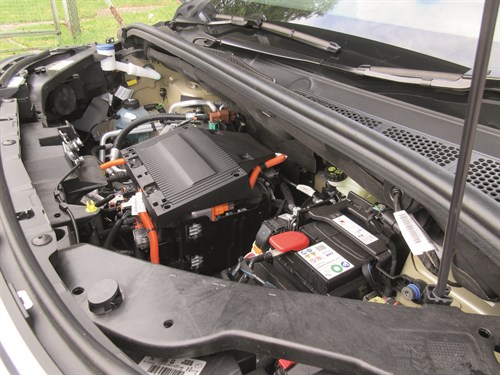- Further 4.25t electric van rule changes under consideration
- Arval research uncovers van fleet optimism
- Pre-orders open for new Nissan Interstar
- More than half of UK van drivers now believe EVs more cost effective than ICE, VW finds
- Public EV charging costs preventing adoption for some fleets, AFP says
- Ford Ranger Tremor review
- Inseego awarded Crown Commercial Service framework status
- ADVERTISEMENT FEATURE: Electrify and optimise: Digital solutions at the forefront of decarbonisation
- Fleets being pushed to take electric vans due to ZEV mandate, AFP reports
- Buying a used... Citroen Relay (2019)
The What Van? Road Test: Peugeot e-Partner (2021)
Date: Tuesday, January 24, 2023

Powertrain
A 50kWh lithium-ion battery is fitted and a combined CCS/Type 2 charging port is positioned behind a flap just above the nearside rear wheel. Our e-Partner came with a 7.4kW on-board charger as standard.
The van’s 100kW (136hp) electric motor produces 260Nm of torque, with power delivered to the front wheels through the single-speed automatic transmission.
Driving
Choose the Power setting and you will have no cause to complain about performance. With all the torque available immediately you will rocket away from rest and overtaking slower-moving traffic where safe to do so is unlikely to be a challenge.
There is a price to pay however.
With the vehicle stationary and the battery fully-charged, selecting Power gave us a projected range of 159 miles. Opting for Normal boosted this figure to a slightly-healthier 167 miles while selecting Eco promised an even-more-creditable 176 miles; ahead of Peugeot’s quoted 171-mile maximum.
This reflects the fact that Power sucks charge out of the battery more rapidly than either of the other two settings. As a consequence we stuck to Normal, which gives you a bit less performance, but a few more miles before you have to plug e-Partner in again.
Going for Eco slows you down noticeably, even when you are unladen. Acceleration is much less brisk, and the cab’s heater pushes out less warmth, so it is not a choice we would recommend in chilly weather.
If you have the MyPeugeot app on your smartphone however then you can pre-heat (or pre-cool) the cab’s interior prior to departure, which might help. You can do so regardless of whether the van is plugged into a charging point or not.
While the range figures quoted may be valid for urban and suburban driving, sustained motorway cruising causes them to drop sharply. This is not a vehicle that is suitable for high-speed intercity dashes.
One way of keeping your speed in check is to use the van’s cruise control and its programmable speed-limiter. Like the traction control system, the limiter can be switched off.
No matter whether we picked Power, Normal or Eco, we found that e-Partner was not all that biddable at low speeds. Caution had to be exercised when manoeuvring into parking spaces for fear that the van would suddenly shoot forward and wallop the vehicle parked in front.
While e-Partner rides and handles well, the level of in-cab tyre and wind noise it generates is too high, and better soundproofing is required. The noise would, of course, be smothered by the sound of the engine in a conventionally-powered van.
View The WhatVan Digital Edition


